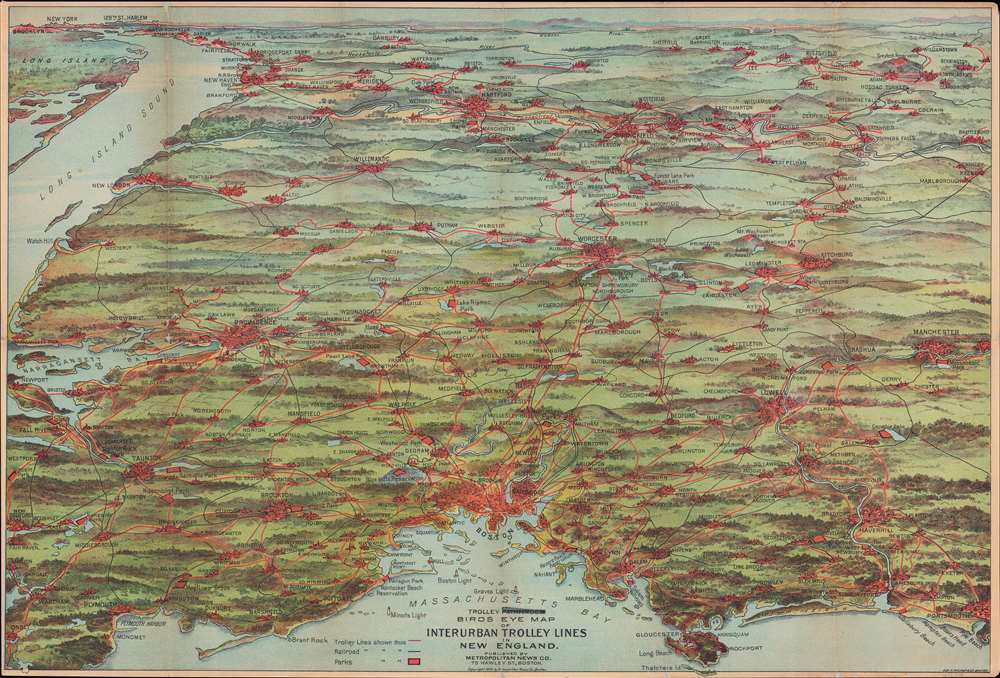
This item below is out of stock, but another example (left) is available. To view the available item, click "Details."
Details
1905 Walker Trolley Map and View of New England Centered on Boston
$700.00
1905 Walker Trolley Map and View of New England Centered on Boston
NewEnglandTrolley-walker-1905-2
Title
1905 (dated) 14 x 20 in (35.56 x 50.8 cm)
Description
Interurban Streetcars
At the end of the 19th century, New England was serviced by an extensive network of interurban electric and steam powered streetcars. These were not proper railroads, but rather a separate system, run by various competing companies, that extended from New York to Boston, and throughout New England as far north as Bath and Lewiston, Maine. By 1919, most of the interurban streetcar lines were consolidated under the Shore Line Electric Railway. The rise of the automobile ushered in the end of streetcar travel by 1940.Chromolithography
Chromolithography is a color lithographic technique developed in the mid-19th century. The process involved using multiple lithographic stones, one for each color, to yield a rich composite effect. Oftentimes, the process would start with a black basecoat upon which subsequent colors were layered. Some chromolithographs used 30 or more separate lithographic stones to achieve the desired product. Chromolithograph color could also be effectively blended for even more dramatic results. The process became extremely popular in the late 19th and early 20th centuries, when it emerged as the dominate method of color printing. The vivid color chromolithography produced made it exceptionally effective for advertising and propaganda imagery.Publication History and Census
This map was created by George H. Walker and published by the Metropolitan News Company in 1905. Stylistically it is very similar to Trolley Wayfinder Birds Eye View of Trolley Routes in New England, published in the same year, also by Walker, but focused more broadly. It is scarce.Cartographer
George Hiram Walker (January 4, 1852 - November 14, 1927) was a Boston based publisher of books, views, and maps active in the late 19th and early 20th centuries. Born in Springfield, Vermont, Walker started his life as a dry goods merchant but developed an active interest in publishing during the early 1870s. Walker began publishing in 1878 when he partnered with an unknown New York Firm. Two years later, Walker brought the operation in house by partnering with his brother, Oscar W. Walker, in the opening of a lithography studio at 81 Milk Street, Boston. Shortly thereafter the firm expanded to new offices at 160 Tremont Street, Boston. The Walker brothers produced a large corpus of works, most of which focused on travel and tourism in New England. Walker also established the Walker-Gordon Milk Laboratory with Dr. Thomas Morgan Rotch and Gustave Gordon. This interesting investment was based on the premise that infant deaths could be avoided by providing higher quality milk. The company eventually became a great success, producing a high-quality cow milk that closely resembled human breast milk. In the process the Walker-Gordon laboratory developed many of the dairy health standards that are still with us today. Walker married Irene L. Loud on March 25, 1885. More by this mapmaker...

